June 24, 2025 | 12:43 GMT +7
June 24, 2025 | 12:43 GMT +7
Hotline: 0913.378.918
June 24, 2025 | 12:43 GMT +7
Hotline: 0913.378.918
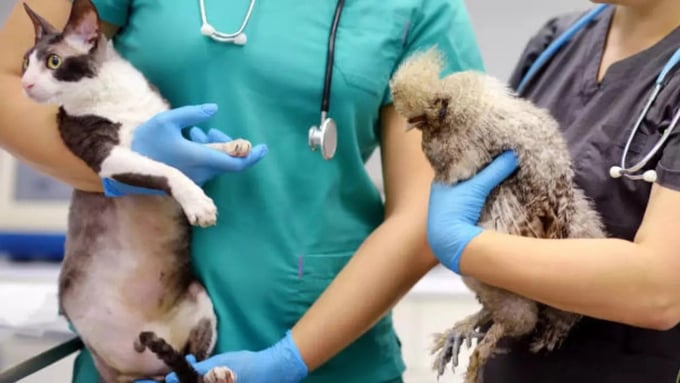
Researchers test cats and birds at a Texas dairy farm. Photo: iStock.
"Regulatory agencies and authorities do not always respond promptly to outbreaks," stated Professor Gregory Gray from the University of Texas Medical School about the avian influenza outbreak that has been afflicting dairy cattle in the United States since early 2024.
This year, the U.S. Department of Health and Human Services has identified 17 human cases, including 6 dairy workers, 10 poultry workers, and 1 community member who has no direct contact with the farm, according to their statistics.
Utilizing a One Health approach and global data collected by Professor Gray's team, including data from Vietnam, he and his colleagues are conducting comprehensive research on the transmission of respiratory viruses at human-animal interfaces at two dairy farms in Texas where an H5N1 outbreak occurred earlier this year.
Gray and his colleagues concentrated on molecular testing, cell culture, and egg inoculation after recognizing this as a highly pathogenic avian influenza virus group. They employed Sanger sequencing and next-generation sequencing to isolate and analyze viruses from a variety of agricultural samples, such as cow nasal swabs, milk, manure, and a deceased avian.
"We identified the H5N1 avian influenza virus in 64% (9/14) of the milk samples and 2.6% (1/39) of the cow nasal swabs. These viruses are closely related to clade 2.3.4.4b H5N1 strains," stated the infectious disease expert, according to Sanger sequencing and next-generation sequencing.
One nasal swab from an ill cow was able to detect SARS-CoV-2, which was a surprise. In addition, 14.3% (2/14) of farm laborers who recently exhibited symptoms exhibited elevated levels of neutralizing antibodies to a related H5N1 strain.
Based on these findings, the professor from the University of Texas Medical School identified a lack of trust between government agencies and livestock farms. He also emphasized the lack of an effective surveillance system to identify emergent pathogens on livestock plantations.
In theory, disease control agencies have sufficient time to identify and address hazards that are expanding; however, this is not the case in practice. "We are using a 'whack-a-mole' approach, which is very ineffective," he indicated.
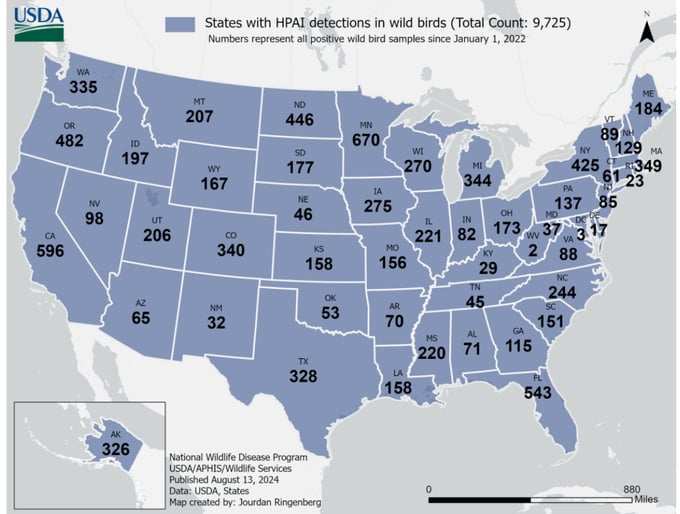
Number of H5N1 positive cases in US states. Photo: USDA.
Professor Gray's research team's data, despite its limited sample size, provides a more comprehensive understanding of the H5N1 outbreak. For example, pigeons and animals may function as early "warnings" of H5N1's entry into the farm.
In both experimental dairy farms, scientists observed numerous dead birds and cats in close proximity of the cattle areas, which were associated with the sick cows. Clinical signs, including nasal discharge and unusual behavior, are believed to have resulted from the cats' infection through the consumption of milk or dead birds. Their minds, lungs, and livers showed significant injury as a result of thorough examinations.
Additionally, there has been a significant increase in the number of bird fatalities in livestock areas, particularly in high-density dairy agricultural regions.
Large-scale avian influenza outbreaks have impacted at least 280 dairy farms in 14 U.S. states as of the end of August 2024. Professor Gray acknowledged that the research his team conducted beginning in April was typically not conducted comprehensively and exhaustively, as a result of concerns regarding the impact on the dairy business.
Future research believes that disease control agencies must devise more effective methods of collaboration with dairy farms to collect more comprehensive epidemiological data. This would also establish the foundation for the development of future interventions against H5N1 avian influenza on dairy farms.
Given that dairy farming has a direct impact on the environment and humans, which are the three pillars of the One Health approach, Professor Gray is advocating for partnerships with healthcare facilities to manage diseases that are transmissible to humans.
"We are conducting serological surveys to identify emerging respiratory diseases in farm workers. We are collaborating with a number of companies that provide diagnostic kits to create tools for the diagnosis of new respiratory viruses. This will significantly assist the livestock industry", the microbiology and immunology researcher also stated.
The International Livestock Research Institute (ILRI) suggests that the public and communities require heightened awareness of the dangers associated with zoonotic diseases. One solution is to establish a disease surveillance system that is based on the One Health approach, involving the agricultural, health, and environmental sectors simultaneously.
Translated by Linh Linh
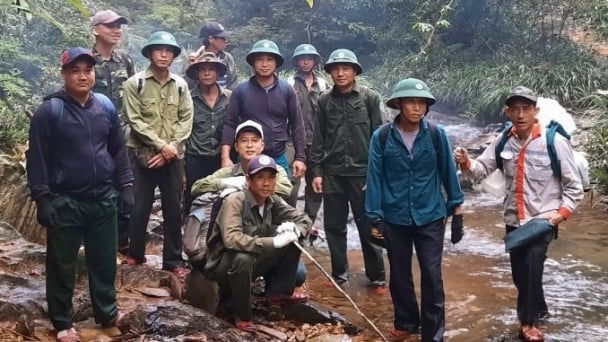
(VAN) All parties have acknowledged the barriers in mobilizing finance for conservation, proposing detailed initiatives. One of the most effective methods is to employ natural-based solutions.

(VAN) Vietnam is the country with the highest diversity of primate species in Southeast Asia, but most of them are seriously threatened, creating an urgent need for conservation efforts.
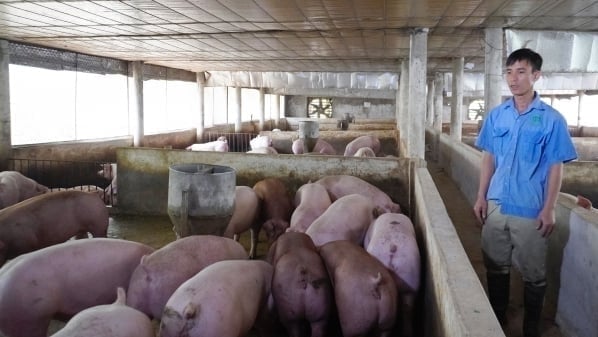
(VAN) Livestock farmers are still hesitant to use the new ASF vaccine products, mostly waiting for responses from large businesses before making a decision.
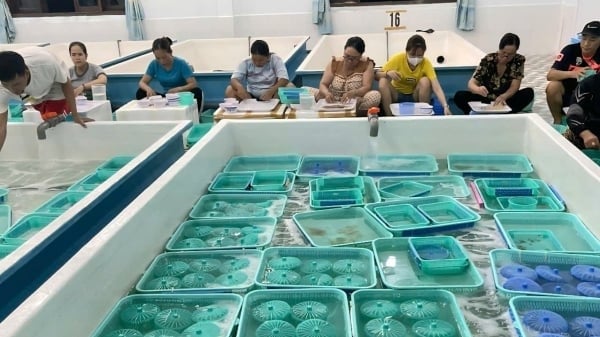
(VAN) Khanh Hoa and Phu Yen continue to strengthen inspection and control of lobster seed circulation in the area, and strictly handle violations.
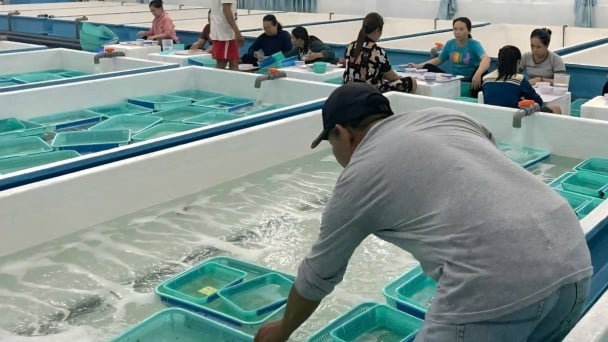
(VAN) Phu Yen and Khanh Hoa recently discovered many batches of lobster seeds of unknown origin. The authorities quickly moved and handled it as per regulations.

(VAN) Thanks to Ninh Thuans’s digitization of shrimp seed quarantine declarations, the procedures for payment and result reception are simpler and quicker.

(VAN) In Amsterdam, the Netherlands, the 18th Global Dairy Congress 2025 took place from June 18-19, where Vinamilk won many grand awards.